Poynting offers a line of low-profile combination antennas marketed for the transportation industry. The antennas offer MIMO cellular and Wi-Fi support as well as GPS reception. This style of antenna is a dome antenna with the cables routed through the base of the antenna. More information on installing these antennas can be found in the Antenna Installation - Low Profile Roof Mounts.
These antennas come in two series - a MIMO-3 Series (the Badger enclosure) and a MIMO-4 series (the Armadillo enclosure).
The spec sheet for the MIMO-3 antennas was updated in mid-2022 to include additional frequencies including T-Mobile's Band 71. We have confirmed with Poynting that this is not a new designed antenna and only a recertification of the existing antenna. The performance of this antenna in Band 71 is still marginal at best.
Note: The marketing name for this antenna series changed in mid-2020. For example, the "3-V2-15" model is now called the "MIMO-3-15" model. This entry is updated to reflect that change, but some content still uses the older name.
The MIMO-3 series comes in the following versions:
- MIMO-3-12: 2-in-1 ultra wideband 2x2 MIMO cellular including CBRS.
- MIMO-3-13: 3-in-1 ultra wideband 2x2 MIMO cellular (w/ CBRS) plus GPS support.
- MIMO-3-14: 5-in-1 ultra wideband 4x4 MIMO cellular (w/CBRS) plus GPS support.
- MIMO-3-15: 5-in-1 ultra wideband 2X2 MIMO cellular (w/ CBRS), 2x2 MIMO Wi-Fi (dual-band 2.4GHz and 5GHz), plus GPS support.
- MIMO-3-17: 7-in-1 ultra wideband 4x4 MIMO cellular (w/ CBRS), 2x2 MIMO Wi-Fi (dual-band 2.4GHz and 5GHz), plus GPS support.
The MIMO-4 series comes in the following versions:
- MIMO-4-15: 5-in-1 ultra wideband 2x2 MIMO cellular, 2x2 MIMO Wi-Fi (dual-band 2.4GHz and 5GHz), plus GPS support.
- MIMO-4-17: 7-in-1 ultra wideband 4x4 MIMO cellular, 2x2 MIMO Wi-Fi (dual-band 2.4GHz and 5GHz), plus GPS support.
- MIMO-4-19: 9-in-1 ultra wideband 4x4 MIMO cellular, 4x4 MIMO Wi-Fi (dual-band 2.4GHz and 5GHz), plus GPS support.
By combining MIMO cellular, GPS, and Wi-Fi antennas - these Poynting antennas are well matched to plug directly into embedded routers by Pepwave and Cradlepoint. However this antenna line does not support long range Band 71 for T-Mobile.
All the variations come in the same low-profile fin-shaped housing, with flexible hole or mag-mount options.
NOTE: The MIMO-3 is confirmed to be the included antenna in the Airstream Smart Control System, which uses a Pepwave MAX-BR1 Mini as the router.
MIMO-3
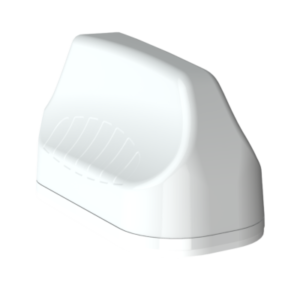
Specifications
- Models: MIMO-3-12/13/14/15/17
- Form Factor: Dome
- Direction: Omnidirectional
- # of Antenna Elements: 2x or 4x cellular, 2x Wi-Fi, GPS single or none
- Frequency Range: 410MHz - 3800MHz
- Impedance: 50 ohms
- Cable Type & Length:
- Cellular: HDF 195, 2m (~6ft)
- Wi-Fi: HDF 195, 2m (~6ft)
- GPS: RTK-031, 2m (~6ft)
- Cable Extender Available
- Connector: SMA Male (SMA/Male to RP-SMA/Male adapters included for Wi-Fi)
- Dimensions (H x L x W): 10 x 5 x 5.6 inches
- Weight: 3 pounds
- Mounting Options: Spigot, Surface, or Magnet (with optional kit) options available
- Outdoor Rated: Yes
- Frequency Range/Gain:
- LTE:
- 410MHz - 470MHz - 1.5dBi
- 617MHz - 960 MHz - 2.2 dBi
- 1427MHz - 1517MHz - 4.2 dBi
- 1710 - 2700MHz - 6.2 dBi
- 3400MHz - 3800MHz (CBRS) - 4.8 dBi
- Wi-Fi:
- 2.4 - 2.5GHz - 3dBi
- 5.0 - 6.0 GHz - 7dBi
- GPS: 1575.42MHz - 1600MHz, 21 +/- 2dBi
- LTE:
- Special Features/Notes: Not Specified
- Retail Price: $160 - $329
MIMO-4
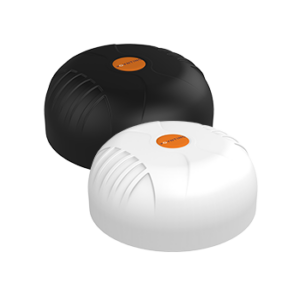
Specifications
- Models: MIMO-4-15/17/19
- Form Factor: Dome
- Direction: Omni-directional
- # of Antenna Elements: 2x or 4x cellular, 2x or 4x Wi-Fi, GPS, single
- Frequency Range: 617MHz - 6000MHz
- Impedance: 50 ohms
- Cable Length & Type:
- Cellular: RTK 031, 2m (~6ft)
- Wi-Fi: RTK 031, 2m (~6ft)
- GPS: RTK-031, 2m (~6ft)
- Cable Extender Available
- Connector: SMA Male (SMA/Male to RP-SMA/Male adapters included for Wi-Fi)
- Dimensions (H x L x W): 6.3 x 2.6 inches
- Weight: Not specified
- Mounting Options: Spigot, Surface, or Magnet (with optional kit) options available
- Outdoor Rated: Yes
- Frequency Range/Gain:
- LTE:
- 617MHz - 960 MHz - 0.5 dBi
- 1427MHz - 1517MHz - 3.5 dBi
- 1710 - 2700MHz - 5.5 dBi
- 3400MHz - 4200MHz - 5.5 dBi
- 5000MHz - 6000MHz - 6 dBi
- Wi-Fi:
- 2.4 - 2.5GHz - 5dBi
- 5.0 - 7.2 GHz - 6..5dBi
- GPS: 1575.42MHz - 1600MHz, 21 +/- 2dBi
- LTE:
- Special Features/Notes: Not Specified
- Retail Price: $205 - $310
News, Videos, & Status
Reseller MobileMustHave (formerly LivinLite.net) sent us the MIMO-3-15 (aka 3-v2-15) model to put into active testing in our Spring 2019 MIMO cellular antenna field testing round, and our findings are summarized below in our member review.
MobileMustHave also sent us the MIMO-3-17 (aka 3-v2-17) model in October 2019, and we tested it against the MobileMark LTM 9-in-1 with the MAX Transit Duo dual modem router.
Members can track our impressions and raw testing data in these places:
- [Testing Lab Report - 5-in-1] Cellular Signal MIMO Antenna Field Testing – (Spring 2019)
- [Testing Lab Report 7-in-1] Pepwave MAX Transit Duo vs WiFiRanger Converge, MIMO Antennas (Fall/Winter 2019/2020)
- In Progress Testing Forum Notes - Lots of detail and conversation.
- Andy's Antenna Lab - Antenna Comparison Tests
Our full review is available to members in the section below.
Videos:
And here's video overview comparing the MIMO-3-17 7-in-1 to the MobileMark 9-in-1 we put into testing in January 2020:
Alternatives to Consider
For other popular cellular antennas on the market we are tracking - here are our featured options:
This Review Contains Additional Member Exclusive Content!
We are Honored to be Member Funded! No ads, no sponsors, no selling (but may contain affiliate links)
Our members fund our in-depth independent reviews.
This entry may contain additional member exclusive content such as testing notes, field testing data, user interface tours, comparisons to alternatives, analysis, tips, videos and discounts.
Members also get interactive guidance, alerts, classroom and more.
Other Ways to Support Our Work At MIRC
Member Exclusive Content Below
- Thoughts & Analysis - Favorite Features & Potential Downsides
- Deep Dive
- Hardware Notes
- Testing Notes
- MIMO Considerations
Purchasing Options
Purchasing Links & Disclaimer
We don't sell stuff, we are primarily member funded. Some links below may be affiliate links (see our disclaimer), which also helps fund MIRC.
The vendors displayed below provide larger discounts to our MIAs that we have negotiated instead of displaying affiliate links while they are logged in.
MIA Discounts - Learn & Save!
Our Mobile Internet Aficionados (MIA) get special discounts from the below vendors. Members please check for discount codes before ordering. With savings up to 11% off, you could save more than your membership cost!
Affiliate vendor links - using these links helps support MIRC's mission (MIAs, please log in to get special discounts):
MobileMustHave:
- MIMO-3-12 (2-in-1) / MIMO-3-13 (3-in-1) / MIMO-3-15 (5-in-1) / MIMO-3-17 (7-in-1)
- MIMO-3-15 Cable Extender/ MIMO-3-17 Cable Extender
TechnoRV:
Onboard Wireless:
- Poynting MIMO-3-12 / Poynting MIMO-3-15 / Poynting MIMO-3-17
- MIMO-3-15 Cable Extender / MIMO-3-17 Cable Extender
Amazon:
Other vendors (non-affiliate):
5G Store:
- MIMO-3-12 (2-in-1) / MIMO-3-13 (3-in-1) / MIMO-3-14 (5-in-1) / MIMO-3-15 (5-in-1)
- Optional Mag Mount Kit
Westward Sales:
Cellular antennas can be a vital part of your signal enhancing strategy to get a better signal, and thus better cellular data performance. They come in many shapes, sizes and varieties.
They can be used directly connected to your mobile hotspots or cellular embedded routers, or they might connect to your cellular booster. They come in omni-directional vs directional, single vs MIMO, and might support different frequency bands. They come in combination antennas with Wi-Fi and GPS.
But most importantly, is your installation options on your RV or boat.
So before choosing an antenna, be sure to understand all of these variables - and keep in mind that there likely isn't a single 'one size fits all' solution here. You may need to make compromises, or even have speciality antennas for challenging signal areas.
We recommend starting with our Guide to Selecting Antennas, and then moving on to our other guides addressing related topics:
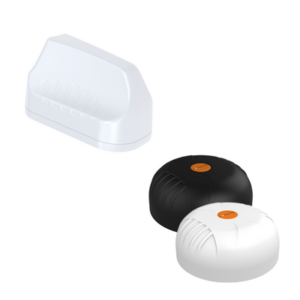
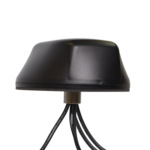
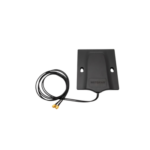
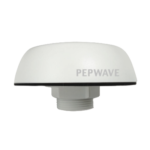


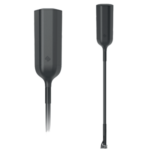
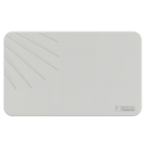
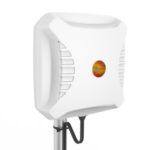
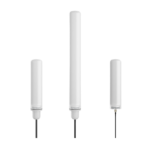
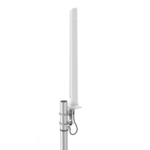

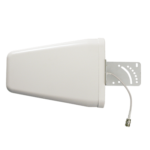



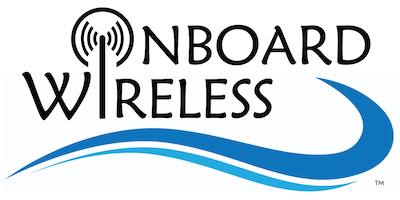






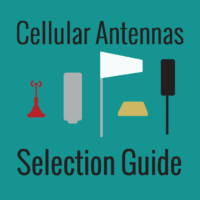
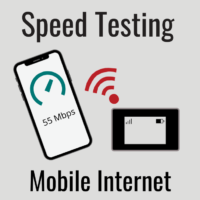
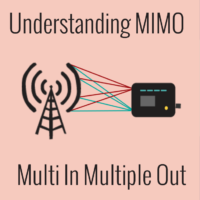
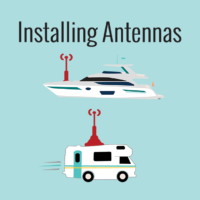

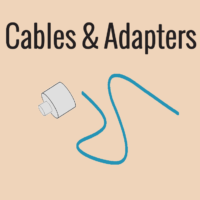
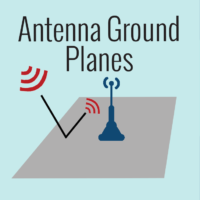
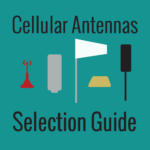



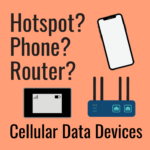

 Mobile Internet Resource Center (dba Two Steps Beyond LLC) is founded by Chris & Cherie of
Mobile Internet Resource Center (dba Two Steps Beyond LLC) is founded by Chris & Cherie of